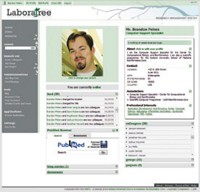Advertisement
Grab your lab coat. Let's get started
Welcome!
Welcome!
Create an account below to get 6 C&EN articles per month, receive newsletters and more - all free.
It seems this is your first time logging in online. Please enter the following information to continue.
As an ACS member you automatically get access to this site. All we need is few more details to create your reading experience.
Not you? Sign in with a different account.
Not you? Sign in with a different account.
ERROR 1
ERROR 1
ERROR 2
ERROR 2
ERROR 2
ERROR 2
ERROR 2
Password and Confirm password must match.
If you have an ACS member number, please enter it here so we can link this account to your membership. (optional)
ERROR 2
ACS values your privacy. By submitting your information, you are gaining access to C&EN and subscribing to our weekly newsletter. We use the information you provide to make your reading experience better, and we will never sell your data to third party members.
Policy
Digital Briefs
New Software and Websites for the Chemical Enterprise
by Lauren K. Wolf
May 25, 2009
| A version of this story appeared in
Volume 87, Issue 21
PlayStation Revs Up Drug Discovery
Toronto-based firm SimBioSys recently launched the newest version of its molecular docking and virtual screening software, eHiTS 2009. This drug discovery tool boasts an improved scoring function trained on thousands of up-to-date Protein Data Bank structures and is tuned for 500 new protein classes. The function, which numerically predicts the interaction between docked molecules, now provides increased correlation between generated scores and experimentally measured binding affinities. To lower the cost and power consumption typically associated with compound-library-screening programs, SimBioSys has also released eHiTS Lightning. This package combines the 2009 eHiTS software with IBM's Cell/B.E. chip multiprocessor, found in the Sony PlayStation 3, to achieve a 10-fold increase in computational speed. The PlayStation 3 hardware (shown) replaces some of the expensive computer infrastructure required for virtual screening programs, opening up computer-aided drug design to smaller companies previously unable to afford it. SimBioSys, www.simbiosys.ca
Software
Spresso is an open-source computational program that can simulate electrophoretic separations (J. Chromatogr. A 2009, 1216, 1008). Released in early 2009 by the Microfluidics Laboratory at Stanford University, the software "is like a double shot of caffeine for researchers" who need to optimize their electrophoresis experiments quickly, according to the engineers involved in development. Through a graphical user interface, scientists working to detect and analyze species such as environmental contaminants, metabolites, and DNA can iterate through different experimental conditions and optimize their setups faster than with tedious trial-and-error lab work. The algorithms employed by Spresso are 75 times faster than those of equivalent simulations; the program also handles electromigration dispersion effects (peak distortions) and steep ion-density gradients at high electric fields. Users can download and customize the Spresso code, which is written in the computing environment and program Matlab and comes with a database of more than 400 chemical species from microfluidics.stanford.edu/spresso. Tutorials for using the software are available on the website as well. Stanford University, microfluidics. stanford.edu
Symyx Notebook v6.2, released at the end of March, is an electronic laboratory notebook (ELN) that has new capabilities for synthetic and medicinal chemists. It enables users to rapidly design and share single- and multistep syntheses. With
the Symyx Available Chemicals Directory, researchers can look up key molecular properties and thus perform reaction stoichiometry calculations more efficiently. And with the informatics system Symyx Isentris, scientists can make retrosynthetic plans by exploring both in-house ELN-captured reactions and Symyx synthesis databases, which access more than 6 million publicly available reactions. In addition, the new version of Symyx Notebook allows users to register purchased or synthesized compounds in a corporate registry, aiding collaboration between labs within an organization. Symyx Technologies, www.symyx.com/elnsynthesis
Website
iBridge Network is a Web-based program run by the nonprofit Kauffman Innovation Network that helps connect university researchers who want to share their innovations with scientists and companies looking to license new methodology and technology. The program's website, updated in February, has advanced navigation and search capabilities and allows users to create their own unique profiles. Currently, iBridge lists almost 620 "drug discovery" innovations and some 430 "chemical" innovations in its network. Users can also receive updates tailored to their research interests via the iBNewsfeed notification system, which is a new website feature. In April, the Massachusetts Technology Transfer Center, which promotes knowledge and technology from institutions in the Commonwealth of Massachusetts, joined iBridge, adding 20 universities and organizations and about 3,000 innovations to the growing network. Ewing Marion Kauffman Foundation, www.ibridgenetwork.org
Lauren K. Wolf writes Digital Briefs. Information about new or revised electronic products can be sent to d-briefs@acs.org.







Join the conversation
Contact the reporter
Submit a Letter to the Editor for publication
Engage with us on Twitter